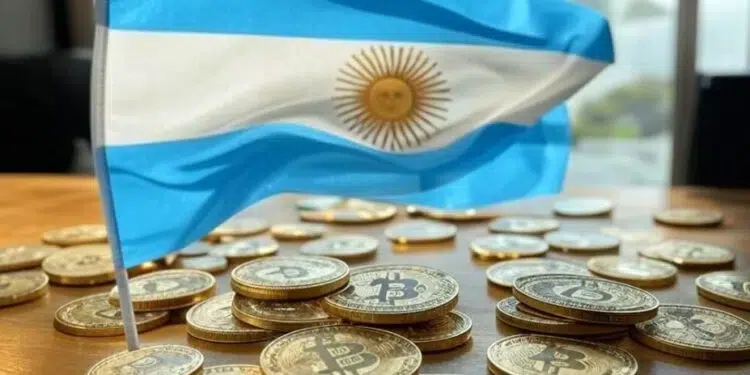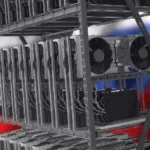Argentina is expected to become the center of neobank expansion in 2026. In a country where the dollar has become a haven from inflation, stablecoins emerge as an alternative for Argentines to maintain purchasing power without relying on the traditional banking system.
Neobanks may be able to take advantage of this opportunity because they have digital infrastructure and the ability to scale quickly. This allows us to offer innovative services that traditional banks cannot (at least not at the same speed).
Before we move on, let’s define a neobank as a 100% digital banking financial institution (regulated by Argentina’s BCRA) that does not have physical branches and operates through a mobile application or web platform.
Unlike traditional banks, neobanks were born with their own technological infrastructure based on APIs and flexible systems. This allows you to develop products faster, operate with minimal cost, and expand to new markets in weeks.
Prominent companies such as Ualá, Brubank and Naranja X already have operations in Argentina, concentrating much of the growth in digital finance. However, it is currently not possible to offer products linked to stablecoins or cryptocurrencies. Starting in May 2022, the Central Bank of Argentina (BCRA) has ordered entities affiliated with the central bank not to directly or indirectly participate in the provision of crypto assets to customers in order to reduce risks to users and the financial system.
Currently, banks (including neobanks) are prohibited from offering to buy or sell cryptocurrencies, so integrating stablecoins in Argentina would require regulatory changes to enable their use within the financial system.
That progress promises transformation. How Argentines save, invest, and interact with the financial system.
Why are neobanks targeting Argentina?
A report from Moic Digital, a digital asset marketing agency, says that in Latin America, crypto use is “not focused on speculation, such as betting on Bitcoin (BTC), NFTs, or altcoins.” Additionally, the report highlights that “the use of stablecoins as dollar-denominated savings and payment tools is highlighted.”
The report also notes that “stablecoins account for 50% to 90% of all crypto transactions in the region’s major markets.” “Think about it: When people in Argentina or Venezuela buy cryptocurrencies, they are not buying BTC in the hopes that BTC will go up, but rather they are acquiring USDT to protect themselves from a collapse in their local currency,” he added.
Of course, it is worth clarifying that the latter is not completely accurate, but rather an exaggeration. Both Argentina and Venezuela are known to have large Bitcoiner communities that include not only long-term holders of Bitcoin and cryptocurrencies, but also short-term traders and speculators.
However, returning to the reviewed report, stablecoins not only reflect a cultural shift, but also a business opportunity. In fact, Moic Digital suggests: Neobanks could potentially take advantage of this benefit by incorporating services based on digital currencies.
In other words, Moic’s argument is that neobanks should enter that segmentwhich offers savings, payments, and investments in digital dollars within a regulated and accessible environment for the general public.
What would this look like in Argentina? To read the phenomenon, it is useful to distinguish between possession and use. According to data from Lemon (Bitcoin and Cryptocurrency Exchange): Looking at the portfolio composition of local users, there is more Bitcoin (33%) than stablecoins (26%) or Pesos.
However, when observed in operation, the ability to save and pay in digital dollars increases the relevance of stablecoins. In other words, Users of that exchange have more BTC in their wallets, buteveryday use is increasingly focused on stablecoins.
“The situation has completely changed in 2024. Inflation has fallen, the dollar has stabilized against the peso (exchange stability), and Bitcoin has reached historic highs,” a Lemon spokesperson told CriptoNoticias.
“One might think that once things cooled down, stablecoins would lose their relevance. However, the opposite happened. Despite the opening of exchange markets in 2025, the demonetization of stocks, and the ability to buy dollars in banks, the volume operated in stablecoins within Lemon increased by more than 20% compared to the previous period,” they detailed.
i.e. stablecoin They are no longer just a haven of value or protection from inflationBut it is the functional infrastructure upon which payments, loans, remittances, and global financial products are built, as seen in the graph below.
So, as Moic Digital observes, neobanks are already targeting Argentina and other Latin American countries. This is because this region meets the conditions to turn this hypothesis into a concrete opportunity. In other words, a de facto dollarized economy, People who perform financial activities in a digital environment but are outside the traditional banking system; and an ecosystem of digital assets that already operates as a parallel financial system.
By promoting and obtaining clear rules for operating with BTC and stablecoins, neobanks will be in a position to further integrate traditional financial systems with the digital infrastructure that powers the region.









